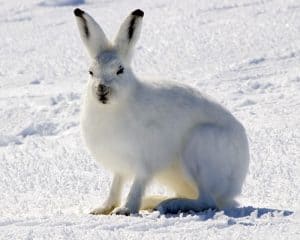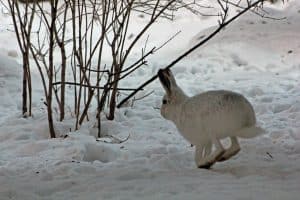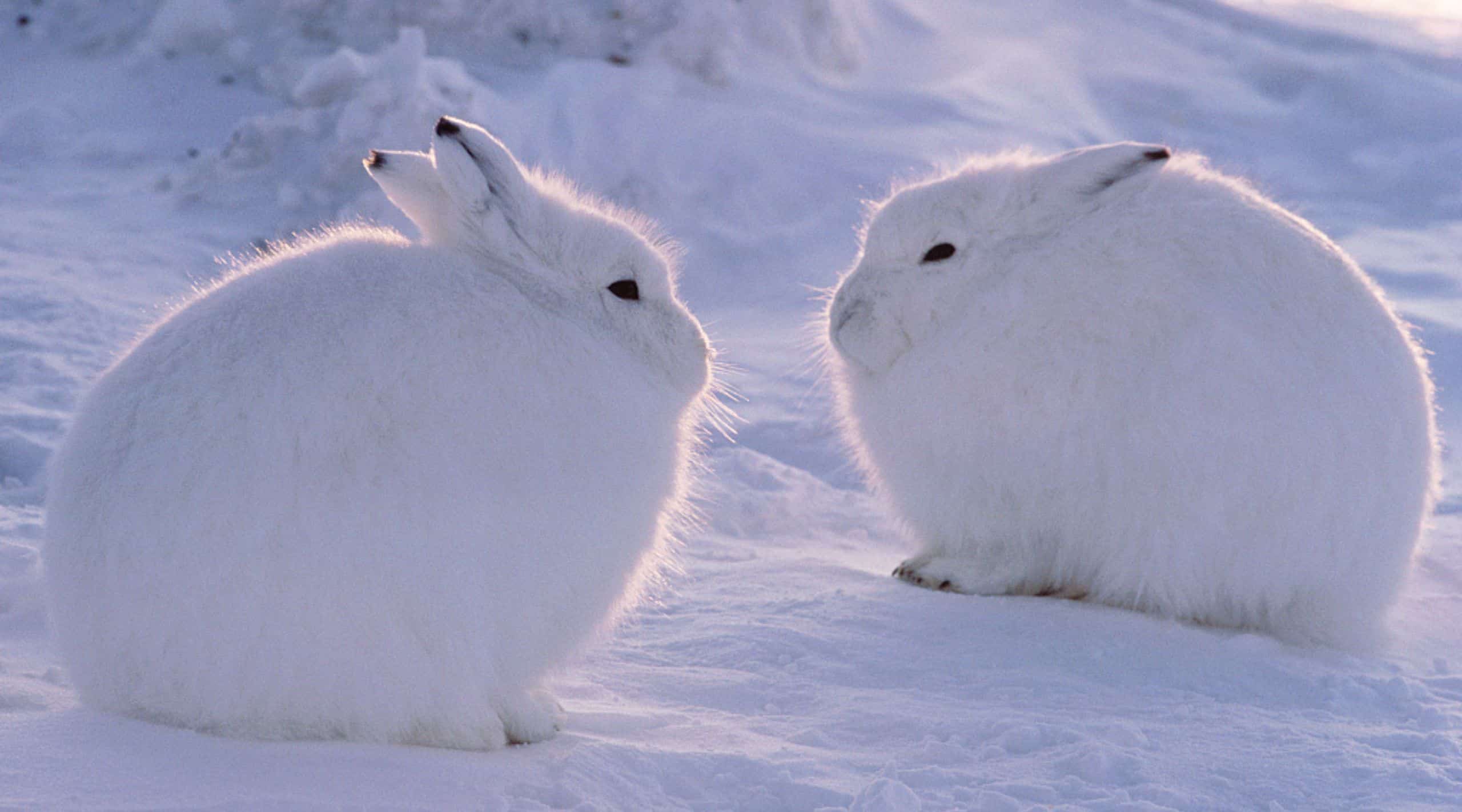The North American tundra is a harsh and unforgiving environment. Still, the arctic hare has managed to thrive in this icy wilderness. These hares are known for their thick fur and shortened ears that help to conserve body heat, allowing them to survive without hibernating. They also have several other unique adaptations that enable them to stay in the Arctic.
Arctic Hare: Speed and Camouflage

One of the most striking features of the arctic hare is its white coat, which provides excellent camouflage in the snowy landscape.
In spring, the hares’ coat changes to blue-grey, allowing them to blend in with the rocks and vegetation of the tundra. In addition to their camouflage, arctic hares are also fast runners, able to bound at speeds of up to 40 miles per hour.
Arctic Hare: Breeding

Another adaptation that helps arctic hares survive is their ability to form large groups. During the mating season, hares disperse rather than form groups, with males taking on multiple female partners.
Females give birth to one litter yearly, and the young overgrow, ready to breed the following year.
Arctic Hare: Diet

Despite the harsh conditions of the Arctic, arctic hares can find food by eating woody plants, mosses, and lichens, which they may dig through the snow to see in the winter. They eat buds, berries, leaves, roots, and bark in other seasons.
The arctic hare has been critical to Native Americans for centuries, both as a food source and for its fur, which is used to make clothing. However, this species is now facing threats from habitat loss and overhunting. Conservation efforts are being made to protect the arctic hare and its habitat. Still, we all must do our part to protect these amazing animals and the environment they call home.
Anyway, don’t miss your chance to showcase your knowledge and skills in Science by participating in the Kancil Science Competition 2023, registration is now open!
Registration can be done through our website 
You May Also Like:
Quiz: How Much Do You Know About Arctic Hare?
This blog post is based on information from National Geographic





